MORE:
> 2011 press releases
Since the original forecast for 2011 was issued on April 22, developed economies in particular have been buffeted by strong headwinds, including the lingering effects of the earthquake and tsunami in Japan, the prolonged budget impasse and credit downgrade in the United States, and the ongoing euro area sovereign debt crisis. Disappointing output and employment data have damaged business and consumer confidence and contributed to the recent turmoil in financial markets.
In light of the deteriorating economy, the WTO now expects world merchandise exports to increase by 5.8% in volume terms in 2011, supported by real GDP growth of 2.5%. Developed economies exports are expected to rise by 3.7% and their output to go up by 1.5%. Meanwhile, shipments from developing economies are estimated to increase by 8.5% and GDP by 5.9% (Table 1).
Table 1: World merchandise trade volume and GDP, 2008-2011a |
||||
Annual % change |
||||
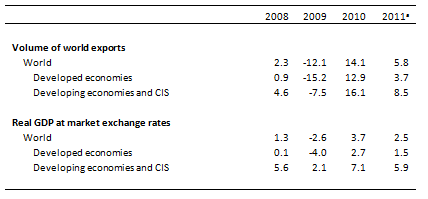
a Figures for 2011 are projections. |
Source: WTO Secretariat for exports, consensus estimates for GDP. |
During the economic crisis of 2008-09, WTO members were for the most part able to resist protectionist pressures, but their collective will has recently been tested by weaker economic growth, high unemployment and forced austerity. Another downturn in the global economy could strain their resolve to the breaking point and trigger a descent into self-destructive protectionism.
“The multilateral trading system has been instrumental in maintaining trade openness during the crisis, thereby avoiding even worse outcomes. Members must remain vigilant. This is not the time for go-it-alone measures. This is the time to strengthen and preserve the global trading system so that it keeps performing this vital function in the future.” Director General Pascal Lamy said.
There is an unusually high degree of uncertainty associated with this forecast, which implies a slowdown in world trade rather than an outright decline. Downside risks to GDP have certainly intensified in the last few months, and where output goes trade tends to follow. The situation in Greece is injecting considerable uncertainty into the economic environment. The economy may be at an inflection point where growth could pick up if policy makers devise a solution to the debt crisis that restores confidence in the financial system. On the other hand, policy missteps could trigger wider instability along the lines of the crisis that followed the failure of Lehman Brothers in 2008. Weighing these factors, we believe that risks to the forecast are firmly rooted on the down side, but we should not ignore the fact that there is some upside potential.
The original forecast from the April press release was quite cautious about the prospects for trade in 2011. As a result, the size of this revision is relatively small. The trade impact of the Japanese disaster turned out to be less than we expected, but the drag imposed by turbulent financial markets could end up being larger than anticipated, which leaves the original forecast not too far from the mark.
The revised forecast for merchandise exports is consistent with the WTO Secretariat’s time-series model for quarterly import demand in a range of major economies (specifically, the members of the Organisation for Economic Cooperation and Development, or OECD, plus China). 1
Chart 1 shows recent monthly merchandise trade developments for selected economies in current US dollar terms, taken from the WTO’s short-term trade statistics 2. Exports have levelled off recently in many developed economies or, in the case of Germany and France, turned ominously downward. Year-on-year growth in German exports fell from 36% in May to 20% in June, and finally to 16% in July. During the same period French export growth dropped from 44% to 14% to 9%. On the other hand, trade flows of developing economies have mostly remained strong, and year-on-year growth rates for China’s trade flows have actually accelerated through August, which should partly cancel any slowdown in developed economies trade. For the moment it appears that the trade slowdown is mostly confined to developed economies, especially in Europe. This suggests that solving the sovereign debt crisis may be the best way to avoid a more serious trade slump.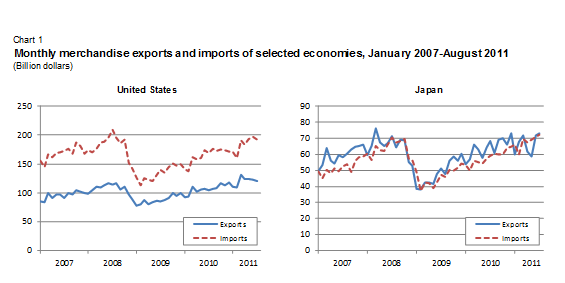
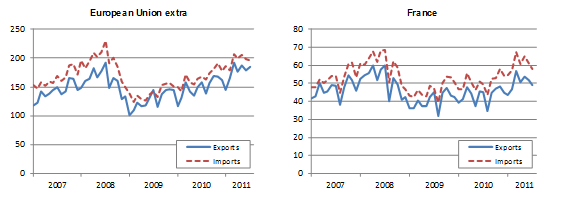
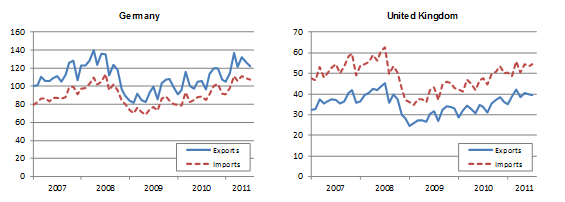
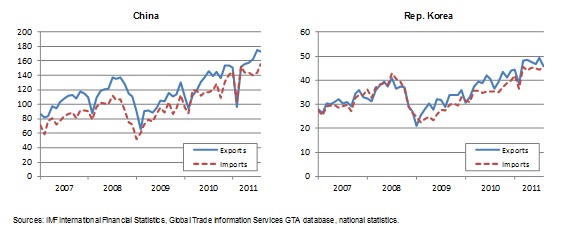
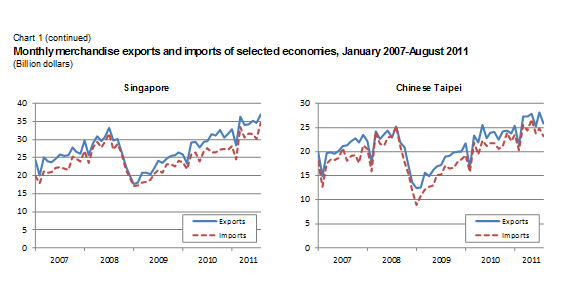
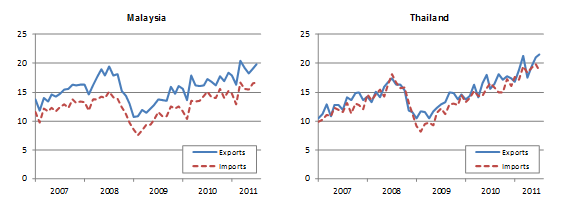
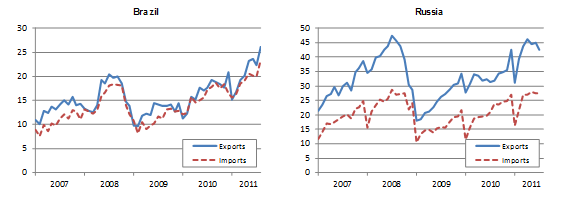
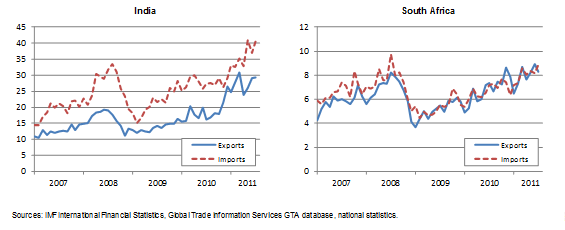 Notes:
Notes:
1. Keck, Alexander, Raubold, Alexander and Truppia, Alessandro (2009) “Forecasting international trade: A time series approach”, OECD Journal: Journal of Business Cycle Measurement and Analysis, vol. 2: 157-176. The model has been extended and further improved since publication and also includes estimations for emerging economies, such as China. back to text
2. Additional quarterly and monthly data can be downloaded from the WTO’s website. back to text
> Problems viewing this page?
Please contact [email protected] giving details of the operating system and web browser you are using.
